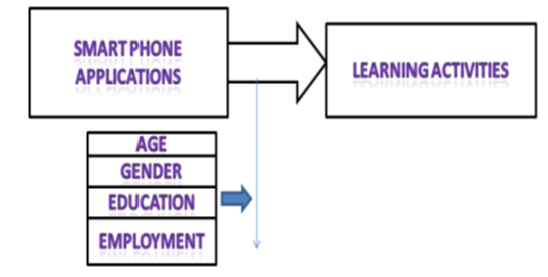


Indian Journal of Science and Technology
DOI: 10.17485/IJST/v13i34.1132
Year: 2020, Volume: 13, Issue: 34, Pages: 3549-3554
Original Article
Sanaullah Memon1*, Hidayatullah Shaikh2, Qadir Bux Rind2,Faheem Ul Hussain Dehraj3
1Department of Information Technology, Shaheed Benazir Bhutto University, Shaheed Benazirabad, Naushahro Feroze Campus, Pakistan. Tel.: (+92)303-3468053
2Department of Computer Science, Shah Abdul Latif University Khairpur
3Department of Business Administration, Shaheed Benazir Bhutto University, Shaheed Benazirabad, Naushahro Feroze Campus
*Corresponding Author
Tel: (+92)303-3468053
Email: [email protected]
Received Date:28 July 2020, Accepted Date:20 August 2020, Published Date:21 September 2020
Objectives:To implement the Smart phone applications towards the learning activities of both primary and secondary level education. Methodology:Primary data was collected by firsthand (Primary source of information) producing the set of questions in English language consisting of two factors of variables using five point measuring scale (strongly agree, agree, neutral, disagree,and strongly disagree). Whereas, Secondary data has also been used for literature review that justifies our research work; in the light of numerous academic articles of various authors. Random sampling method was used by collecting the data from the 248 respondents including both students and teachers of Private schools. We checked the reliability of the instrument by using spss18 through Cronbach’s alpha and further justified the results by using regression analysis. Findings: Smart phone applications are the debatable and burning issue of different organizations during covid-19, which is focusing on learning activities of students. Smart phone applications need not be successful unless the effectiveness and usage of these applications are ensured. In this perspective, smart phone applications are directly related with academic activities.
Keywords: Smart phone application; learning activities; private schools;education; children; teacher
© 2020 Memon et al.This is an open-access article distributed under the terms of the Creative Commons Attribution License, which permits unrestricted use, distribution, and reproduction in any medium, provided the original author and source are credited. Published By Indian Society for Education and Environment (iSee).
Subscribe now for latest articles and news.